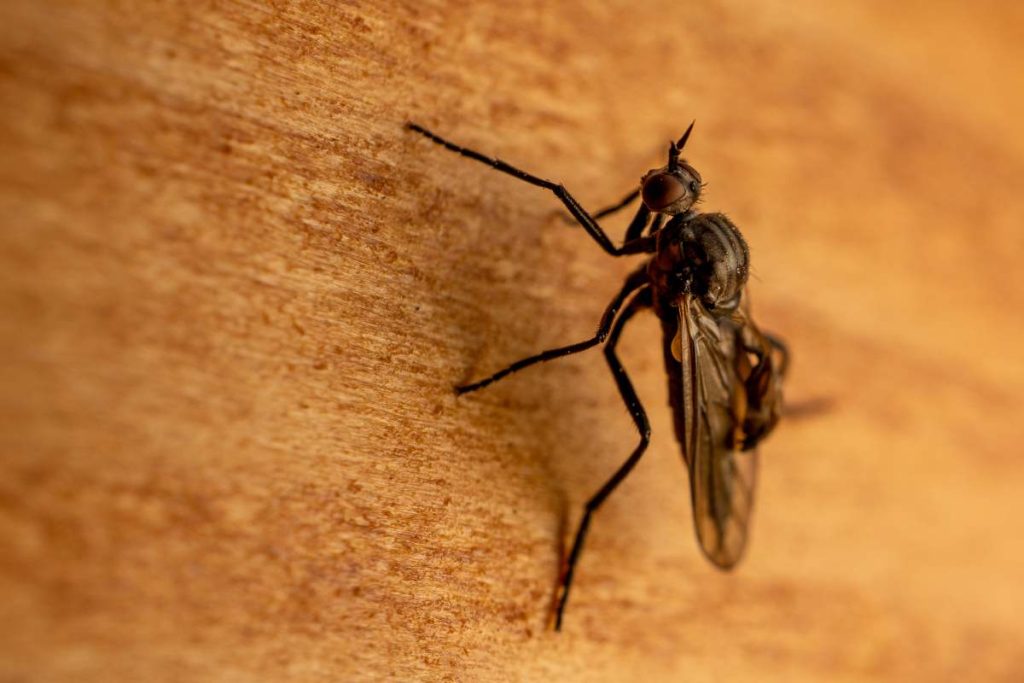Gnats are tiny, flying insects that can turn a peaceful home into a bothersome environment. Whether they’re buzzing around your kitchen, swarming around houseplants, or lingering near drains, these pests can be more than just a nuisance. Understanding what gnats are, how they become a problem, and how to effectively manage them is essential for maintaining a comfortable living space.
In this article, we will explore common types of gnats, their potential impacts, and offer practical, easy-to-follow methods for getting rid of them. If you’re dealing with a gnat problem, read on to find out how you can reclaim your home from these persistent pests.
Related article:
- What are white ants? How much does white ants treatment cost?
- 10 Most Common Bugs in Your Home and How to Eliminate Them
Are Gnats Harmful?
While they are mostly just a nuisance, some types of gnats can pose minor risks to humans. here’s how gnats might affect you and whether they can be harmful.
Types of Gnats and Their Risks
To understand if gnats are harmful, it’s helpful to know about the different types of gnats and what they do. Here’s a breakdown of common gnats and their potential risks:
- Fungus Gnats
- What They Do: Fungus gnats are tiny black or grey insects that are often found around houseplants. Their larvae feed on decaying organic matter in the soil, which can sometimes damage plant roots.
- Are They Harmful? Fungus gnats are not harmful to humans. They don’t bite or sting and are generally considered more of a nuisance than a health risk. However, if the infestation is severe, they might cause some discomfort by flying around and landing on people.
- Fruit Flies
- What They Do: Fruit flies are attracted to overripe or rotting fruits and vegetables. They are tiny and have a characteristic red eye.
- Are They Harmful? Fruit flies are not harmful to humans. They don’t bite, sting, or spread diseases. However, they can be a sign of poor fruit storage practices and can spread bacteria from decaying food.
- Drain Flies
- What They Do: Drain flies, also known as sewer flies or moth flies, breed in organic matter found in drains and pipes.
- Are They Harmful? Drain flies are generally not harmful to humans, but they are a sign of potential hygiene problems. They don’t bite or spread diseases, but their presence indicates that there may be a buildup of organic matter in your drains that could lead to other issues.
- Biting Midges
- What They Do: Biting midges, also called no-see-ums, are small insects that bite and feed on blood. They are often found in damp, shaded outdoor areas.
- Are They Harmful? Biting midges can be harmful to humans. Their bites can cause itching, swelling, and discomfort. In some cases, they might transmit diseases, especially in regions where they are more prevalent. However, in most areas, their bites are more of an annoyance than a serious health threat.
- Black Flies
- What They Do: Black flies are small, dark-coloured gnats that are found near rivers, streams, and other freshwater sources.
- Are They Harmful? Black flies can bite and their bites can be very irritating. In some cases, they can transmit diseases like river blindness in tropical regions, but in many areas, they are just a nuisance.
General Risks of Gnats
Most gnats are not dangerous and do not pose significant health risks. However, here are some general considerations:
- Nuisance Factor: Many people find gnats annoying because they tend to swarm around food, plants, and people. While they aren’t harmful, their presence can be bothersome.
- Hygiene Indicator: Certain types of gnats, like drain flies, might be an indicator of cleanliness issues. Regular cleaning and maintenance can help prevent infestations.
- Allergic Reactions: In rare cases, some people might experience allergic reactions to gnat bites or stings. If you have sensitive skin or are prone to allergic reactions, it’s a good idea to manage gnat populations to avoid bites.
How to Handle Gnats
If you are dealing with gnats, there are several strategies you can use to keep them under control:
- Keep Things Clean: Regularly clean your home, especially around food and in the kitchen. For garden plants, avoid overwatering and keep the soil healthy.
- Use Traps: You can use various traps for different types of gnats. For instance, apple cider vinegar traps work well for fruit flies.
- Fix Drains: For drain flies, clean your drains regularly and use drain cleaners to remove organic matter.
- Repellents: Essential oils like peppermint and eucalyptus can help repel gnats.
Most gnats are not harmful to humans. They can be annoying, and in some cases, they might be a sign of a larger problem, such as poor hygiene or decaying organic matter. The biggest concerns are with biting midges and black flies, which can cause irritation and, in rare cases, spread diseases. For most types of gnats, regular cleaning and maintenance are enough to manage and control their presence.
Conclusion
Dealing with gnats can be a frustrating experience, but with the right approach, you can effectively manage and eliminate them from your home. By understanding the types of gnats and their sources, you can choose the most effective strategies for getting rid of them.
From thorough cleaning and using traps to implementing natural remedies and preventative measures, there are numerous ways to tackle a gnat problem. If you find that these methods are not enough, don’t hesitate to seek professional help for more advanced solutions. With these tips, you’ll be well on your way to a gnat-free home and a more comfortable living environment.
Don’t let these tiny pests get the best of you—take action today and enjoy a peaceful, gnat-free space!
